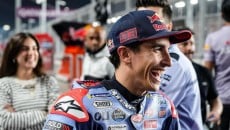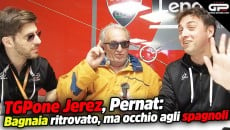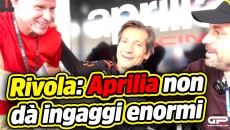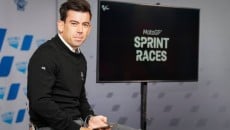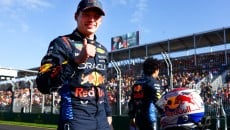Videometry is also among the innovations proposed by the 2024 MotoGP championship. Starting from the Qatar GP scheduled for 10 March, all the teams will officially have a technician or expert at their disposal who will take care of it specifically.
The task of the expert will be to record the lines held by the riders in some pre-established points of the track, in particular in curves. Using software, the images will be superimposed to bring out the different trajectories adopted and the result will be shared with everyone. In this way it will be easier to identify the most beneficial line to hold on the track.
Until now, when you had difficulty reaching a competitive level in a change of direction, you could choose two paths: the traditional one which simply involves following in the slipstream of those who are faster, or that of studying the videos.
So, it is not exactly a newly introduced technique, on the contrary, its first use goes back to 2011 when the Belgian technical chief Serge Andrey used it in Ducati, developing it for three championships until the end of the program which coincided with the arrival of Andrea Dovizioso in the team, as reported by Motorsport.
Due to the innovative nature of this invention, the engineer was hired in 2014 by Honda and precisely by LCR to improve Stefan Bradl's performance. Actually, the good intentions did not lead to the desired results and for 2015 the German left to join Aprilia. Someone who he did manage to help was Cal Crutchlow and even Marc Marquez, who showed interest in the light of this progress. In the end HRC agreed to pay the technician in order to see its benchmark rider assisted from this point of view.
In the same period, Suzuki with the Japanese Motohiko Tono also decided to do the same by further implementing the system, which was in turn purchased by Honda to create its own personal videometry department. Despite this, the rider from Cervera preferred to continue making use of Andrey's skills, so Tono then was only responsible for Pol Espargarò and more recently Joan Mir.
The eight-time world champion had even proposed to the Belgian that he follow him in his adventure at Gresini Racing or at least sell him the software, receiving a blunt reply.
Thanks to technological advances and the creation of open source programs, there will no longer be a need for a developer engineer, but a person capable of recording and editing will be sufficient, in addition to a specialized technician. Currently the best coach in the top class is considered the Spaniard Idalio Gavira for VR46 Racing.
Gresini, however, will rely on Manuel Poggiali, from this year also among the ranks of the official Ducati team, and Pramac, despite the limited budget, will have one as well, in the person of Max Sabbatani. Yahama will still be looked after by Daniel Bollini, but on the contrary KTM will rely on an external company, like Aprilia.
This working method is also gaining ground in SBK. Ducati is being followed by Chaz Davies and the Iwata manufacturer by Nicolò Canepa. Honda, on the other hand, will start this very year.




